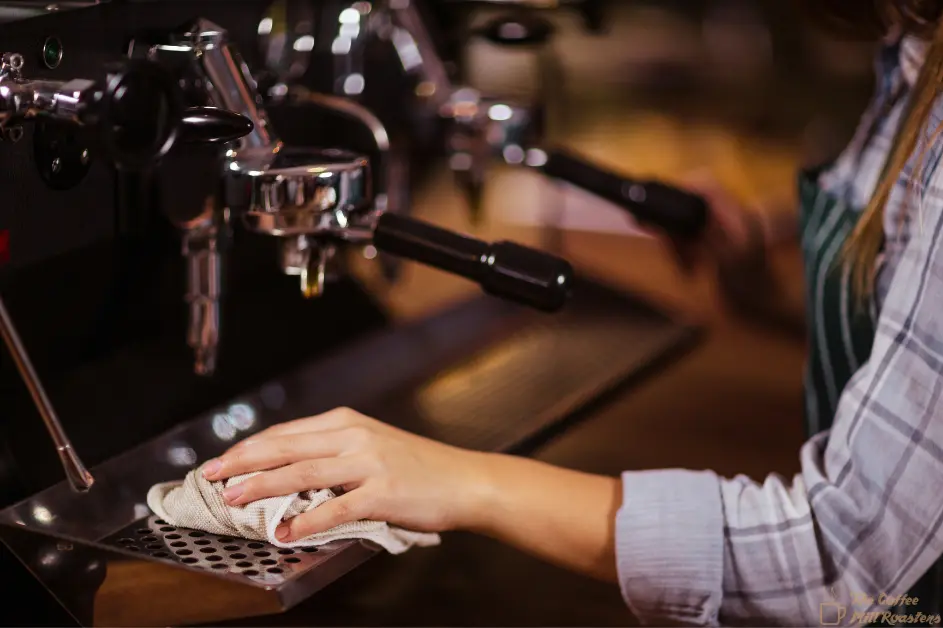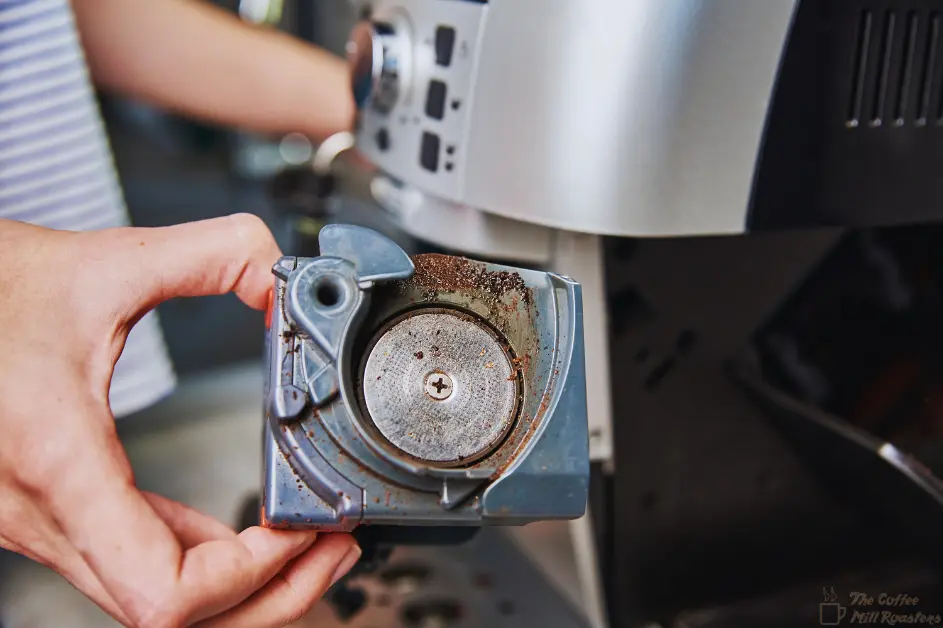Also called Miss Silvia, Rancilio Silvia is a single boiler compact appliance for espresso lovers. Because of its affordability, sufficient steaming power, and effortless operating facility, it has become the desired one in the coffee community.
Unfortunately, similar to all other espresso machines, limescale is a common enemy of the Silvia. It does not only affect the taste of espresso but also lessens the lifespan of your machine.
However, every problem has a solution. Descaling is a proven method to take out limescale and protect your espresso machine. It is an essential portion to include in your espresso machine maintenance routine.
Components like citric acid, distilled white vinegar, and commercial descaling powder are used as descalers for espresso machines in general. They are very effective in removing limescale from Rancilio Silvia if you follow the exact steps.
In this post, we will describe those steps so that your descaling requires minimum effort.
Are Cleaning and Descaling the Same Thing?

It can be puzzling for users. They remain untrained whether it is cleaning or descaling. Many users think cleaning and descaling are the same things, but they are not. Though they are different, the purpose of both is to get high-quality coffee and increase the longevity of the machine.
Natural water contains substances like magnesium and calcium. When these substances pass through an espresso machine for a long time, they gradually form limescale.
Limescale prevents an espresso machine from generating proper heat leading to the production of poor quality coffee. Descaling is the process of taking out the limescale layers from your espresso machine.
On the other hand, cleaning is a simple process of neatness. The purpose of cleaning is to wash out the coffee oil remnants that have formed over time.
Though they are not the same thing, both cleaning and descaling are crucial to enhancing an espresso machine’s longevity.
Read More: How to Dial in Breville Barista Express?
What will Happen if You Never Descale?

The layer of calcium and magnesium is formed gradually inside a coffee machine. It is not toxic, but it can hamper the quality of your espresso.
When you make a particular type of coffee, you will need an accurate temperature. The layer wraps the boiler’s heating surface and prevents water from reaching precise temperature. Thus the water cannot brew the ground using the required temperature.
As a result, your coffee will taste dull. The machine won’t be able to extract the flavor of coffee beans. It compels your machine to work harder, which leads to more electricity consumption.
Sometimes the water flow can be interrupted abnormally, which is one of the significant reasons for espresso machines getting damaged. So, it is a bad idea if you think about no descaling.
Read More: What Does the Bold Button Do on a Coffee Maker?
What do You Use to Descale Rancilio Silvia?
Nowadays, commercial descaling powders for espresso machines are available in local stores. The manufacturers claim that they are made of 100% natural ingredients. Therefore, they don’t harm the boiler or affect the quality of coffee.
Citric acid is a widely used descaler for espresso machines. It is also a natural ingredient found in sour fruits like lemons. You can now buy citric acid in powdered form from any grocery shop. It is also called the “sour salt” if you don’t yet recognize it.
According to many users, distilled white vinegar is one of the cheapest and best options to descale an espresso machine.
You can use any of these ingredients to descale the Rancilio Silvia. Though making the descaling mixture can vary depending on the component, the descaling process is the same.
How to Descale Rancilio Silvia Espresso Machine (Step by step)
You don’t need to have the professional knowledge to descale your Rancilio Silvia espresso machine. However, you need to know how to make the mixture using the above ingredients. If creating the mixture of citric acid or distilled white vinegar seems troublesome to you, we recommend using commercial descalers.
PRO TIP: Never descale a hot espresso machine. Make sure it is at the normal temperature.
Step 1: First, choose the appropriate descaler. Citric acid needs to mix well with water. If you select white vinegar, make it thinner by adding sufficient water. Commercial descalers come with a user manual that you have to follow.
Step 2: Pour the mixture into the tank and fill it up with water. Make sure the mixture has got into the steam wand as well. After some time, the mixture should begin working on descaling the layer of limescale.
Step 3: Wash out your machine two to three times and ensure no sticky substance remains inside.
Step 4: Now, pour fresh water into the tank and wash out the machine several times. You need to confirm the absence of descaled objects inside.
Step 5: After washing out the machine several times, smell and check out the water. It is done if the water doesn’t contain foam and smell soapy.
Read More: Espresso Grinder For Rancilio Silvia
FAQs on Descaling Rancilio Silvia
The descaling frequency mostly depends on the machine’s usage and the user’s personal preference. A great number of users descale their espresso machines once a month. However, experts recommend descaling an espresso machine at least once every three months.
Citric acid is a cheaper and safer option for descaling. It becomes liquid in water easily and does not harm the espresso machine’s boiler at all. Many users think citric acid is the best descaler for Rancilio Silvia.
Separate the group head from the machine and remove all wastes from it. Take some dishwasher liquid and mix it with hot water to make a solution. Now, soak the group head into the mixture for a while. Use an old toothbrush to clean the head, and finally, rinse with fresh water.
Final Thoughts
If your Rancilio Silvia is poorly operated and maintained, it will fail to provide its best performance. It can even be damaged soon, a complete waste of your money and time. On the other hand, regular descaling will provide you with the best taste of espresso and the better longevity of the machine.